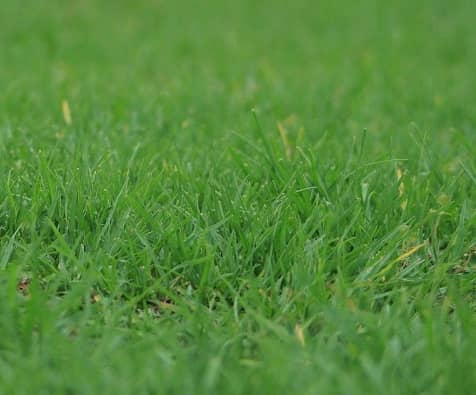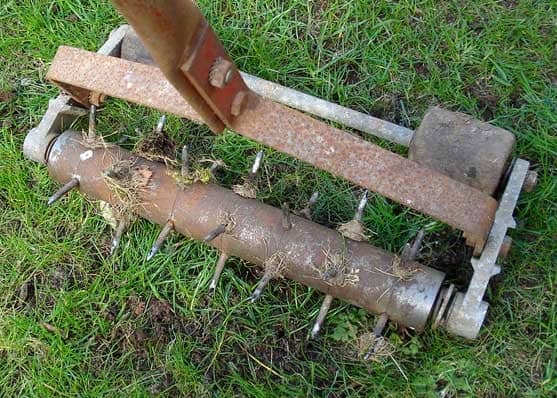How to aerate your lawn manually by hand? Over time the turf on your lawn becomes compact and filled with thatch. In this time, the turf will need much water, oxygen, and nutrients but the supply is stopped from reaching the roots of your grass and plants. To keep your lawn healthy as before, you will need to take steps to ensure essential water, oxygen, and nutrients that the roots need. You can do this through a process called aeration.
Achieving a healthy lawn needs a good range of regular care. Common care exercises are watering, mowing, and fertilization. Aeration is one more thing you will need to take care of to get a truly healthy lawn.
On modern Earth, there are many machines and tools to aid you to aerate your lawn and improve the healthy growth of your grass. Despite the best technologies, you still need to know why and how to aerate effectively and even how to do it manually, especially if you are a small or medium-sized lawn owner.
Let’s have a look below:
What Does It Mean to Aerate Your Lawn?

Actually, lawn aeration is the way of puncturing the soil by preparing small holes that enable water, air, and nutrients to enter into the roots of your grass. While you can rightly aerate the soil, you can assist the grassroots to grow strongly. As a result, it is called the key to healthy lawn and turf.
After using the lawn frequently by you, your family, or pets, chances have been compacted the turf making the surface soil hard underneath the top layer. Similarly, thatch can develop in the lawn over time. Both compaction and thatch build-up can create a barrier layer to reach water, oxygen, and nutrients into the roots of grass and plants.
For this cause, aeration is the way to lose the soil of your lawn, and these more essential elements get into the grassroots. You can do this by making holes in the lawn. However, it would be best to be careful that there is a very definite process of aeration before you occupy a garden fork and start making dots in your lawn with holes.
How do you Determine When to Aerate your Lawn?
Unfortunately, maximum homeowners are uninformed when is the proper time for aeration. If you like that, here are some of the things that you need to know when is the appropriate time for aeration.
If your kids or pets heavily use your lawn for playing in the backyard, you need to aerate the lawn. If your lawn becomes spongy or if the grass dries lots faster, then this can be a hint that your lawn has excessive thatch. To be confirmed of this, you can remove a part of the lawn through a shovel. If you look at the thatch covering the blades of grass that surpasses 1.5 inches, you will move for aeration.
We also suggest you aerate your lawn if your lawn previously faced a lot of stress like construction. Lastly, if your lawn started as sod, then you need to aerate your lawn as the soil layering of sod hostilely affects the transportation of required oxygen, water, and nutrients by your grass.
When is the Ideal Time for Aeration?
There is another important thing that needs to consider before aerating your lawn is the appropriate time. First, you need to know the grass types because different types of grass require different times for aeration.
If you have warm-season grasses such as Bermuda grass, then spring is the ideal time for aeration. You should start the process as soon as possible after the soil has thawed.
On the other hand, if the lawn is covered with cool-season grasses such as Kentucky Bluegrass, conducting aeration during the fall season is wise.
In addition, sandy soil containing lawns needs aeration every 2 to 3 years, whereas clay soil containing lawns or heavy foot traffic needs aeration each year.
How to Aerate your Lawn Manually
The following things are significant to aerate your lawn successfully:
- Determine the type of grass: The first step is to know the type of grass growing on it. As we have illustrated above, the grass type indicates the ideal time for aeration. Now, look at the type of grass, whether warm-season or cool-season, then do the future procedure.
- Determine the soil type: Soil type is another important factor in identifying the intervals between each aeration. Such as the interval period for sandy types lawn or clay types lawn are given above.
- Understand your lawn habits: Different homeowners use their lawns for various purposes. If you run over your lawn continuously, or it is a daily kids’ or pets’ playing field, you need to aerate your lawn each year to eliminate extreme soil compaction. In addition, if you have recently sowed the grass seed on the lawn, then you should wait around a year to give time for proper seed germination and a robust root system. Moreover, if the roots’ depth is less than 2-inches measured through a screwdriver or shovel, we suggest aeration.
- Decide on the manual aerator to use: After that, you have to choose the type of manual aerator in which you feel comfortable. Depending on the requirement and preference, choose one from the three tools that we mentioned above.
- Prepare your lawn: Before aerating your lawn, preparing the lawn must take into consideration. The preparations include tillage, raking debris, leaves off the lawn, and mowing for easy penetration. Besides, make sure the sprinkler is turned off before aerating.
- Assess the moisture level: Next, you have to take a look at the moisture level of your lawn’s soil. Manual tools operate best in moist dirt and soft conditions.
- Focus on sensitive areas: If you have such areas that get more traffic than others, we suggest giving immediate care to these areas. You might even drive over them twice to assure desired results.
Aerating your Lawn by Hand (Methods of Hand Aeration)
There are many manual lawn aeration methods to penetrate essential water, air, and nutrients into the soil for proper grass growth. All the ways are uniformly effective.
Though manual processes may not be as fruitful as a machine, they can still deliver outstanding results. Besides, the manual tools are very affordable and eco-friendly. The main drawback of manual tools is they can be pretty exhausting and laborious.
Using a manual core aerator

“Manual core aeration” is the best method of manually aerating your lawn. It has a handle and a foot bar. You need to hold the handle through both hands to drive it into the soil. The foot bar offers extra leverage in the compacted soil areas. This tool works excellently on moist soil and aerates the lawn by interfusing the ground with sharp cylinders that make holes into the turf and dismiss tiny lawn plugs. In this method, it is necessary to drive the aerator over the whole lawn.
Using a manual spike aerator

Another good aeration tool is the manual spike aerator. It operates likewise to the manual core aerator, but it includes a number of spikes in place of cylinders. It conducts small holes into the turf to ease the soil and offer better penetration and flowing of water, air, and nutrients.
Using a fork

A fork is another excellent tool for lawn aeration. The method is almost like spike aeration. Because of the effective penetration of compacted soil, you don’t need to spend money to buy new ones if you already have a fork. However, the process may be more exhausting and time-consuming, especially if you are an owner of a large lawn.



